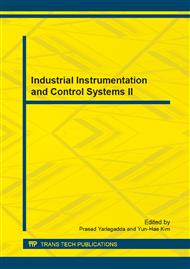p.794
p.799
p.804
p.811
p.815
p.820
p.826
p.833
p.839
A Novel Intelligent Elevator Group Control Algorithm Based on Corridor Passenger Detection and Tracking
Abstract:
The conventional elevator group control system is based on the button as a response and where to dispatch an elevator car. There is one big problem that when system dispatches the elevator to that button responding floor, but no passenger there and causing a waste of time and energy. In this paper, we present a novel intelligent elevator group control algorithm based on corridor passenger detection and tracking. In the above proposed system, after the corridor passengers are detected using binocular-cameras, Unscented Kalman Filter (UKF) is introduced to improve robustness and accuracy of corridor passenger motion tracking. At same time, a novel intelligent elevator group control strategy based on corridor passenger detection and tracking is proposed to improve the performance and transport efficiency of the elevator. Compared with the traditional elevator group control system, the proposed system has potential advantages in minimizing passengers’ waiting time and saving electronic energy. The final experimental results show the validity of our method under simulation condition.
Info:
Periodical:
Pages:
815-819
Citation:
Online since:
July 2013
Authors:
Price:
Сopyright:
© 2013 Trans Tech Publications Ltd. All Rights Reserved
Share:
Citation:


